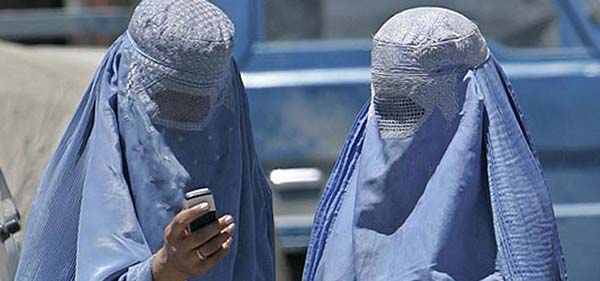According to reports, violence against women has increased by 8 percent in recent months in Bamyan province and the perpetrators go unscathed from prosecution. The victims have voiced against the injustice going on in judicial systems and this incident adds insult to the injury of the women outraged by rape or physical and mental tortures. Violence against women is a chronic problem in collective and individual life in Afghanistan and women were deemed inferior many years back. Yet the patriarchal system holds sway in the country.
The images of abused and helpless Afghan women incessantly flood our minds, undermining the significant role of women as agents of change in Afghanistan. During the 1920s and 70s, a period of economic and political stability, a large number of Afghan women asserted their rights and continued their education and professional pursuits. These women belonged to a privileged economic background; all the same their role and aspirations offer the world an alternative narrative. Acknowledging the agency, contributions, and strong voice of Afghan women does not undermine the stories of women like Nazia, an 18-year-old Afghan woman whose nose and ears were sliced off by her husband and appeared on the cover of Time magazine in August 2010, or Sitara, a 30-year-old women whose nose and lips were lopped off by her addict husband in Herat province in 2013 and their audacious spirit, whose story of sufferings is one too many for our world.
Last year, BBC reported about two girls who fell victim to sexual aggression in Baghlan Province in North of Afghanistan. When a 9-year-old girl was raped by a man, four male members of the victim’s family attacked his home and committed the same honor-killing against his 15-year-old sister as revenge.
Although, since the fall of the Taliban in 2001, Afghan women have made significant advances in rights, with millions of girls attending schools and women holding government posts. But with the steady withdrawal of foreign forces and the Taliban insurgency still resilient, there are growing fears the gains will be lost.
The truth is that a backlash against women rights campaigns started back in 2001 after the overthrow of the Taliban. Its first public face was the young TV presenter Shaima Rezayee. Accused of flirting on TV, the music show presenter was found dead in 2005. The murder was never fully investigated but rumors abounded that hers was a Taliban murder or maybe an “honor killing”. These two possibilities could be expressed in one breath showed that the misogyny of the average Afghan family was perhaps not vastly different from that of a Taliban state.
Shaima’s killing made it clear: if there was one part of Afghan society that was ready to embrace women’s rights, there was another part that was ready to suppress them. Women soon discovered that the enemies of women’s rights were as omnipresent as dust and corruption. Neologisms such as “the Talib in suits” or “the tie-wearing Talib” were coined to sum up encounters with misogynist men dressed up as progressives. Some of them held PhDs others were Fulbright scholars. But a university degree was no guarantee for a progressive mind.
Meanwhile, the silence of the women whose very job was to stand up for Afghan women against this steady backlash was conspicuous, but not surprising. Many of them were mere extensions of the same mafia clans that had already infiltrated politics and economy. Few of them believed in feminism. Some publicly distanced themselves from women’s rights others openly supported the Taliban.
Women’s struggle for civic and human rights still has a long way to go. Three decades of war has left many Afghans both eager for change and afraid of it. There are still many instances of ordinary women experiencing domestic violence, being sexually abused, or being forced into marriage. Women in senior leadership roles – such as in parliament or the police – are still being murdered. Some men feel threatened by the presence of women in senior positions. These men see women’s rights as the “westernization” of Afghan culture and a threat to moral standard.
The women right based on quality, access to higher education, and their escape from narrow gender roles is not easily achieved. The struggle for sexual equality based on civil rights has a long history and is likely to continue. In traditionally patriarchal society any improvement in the status of women has for reaching consequences and produces fundamental social and political change. Therefore it is always resisted by the established powers in a society. However, it seems certain that they will ultimately have to relent because struggle based on equal rights for women is both necessary and desirable.
Education is the best strategy to liberate women from male domination. Investing in girls’ education is critical to addressing girls’ needs and concerns as well as human rights. It has been shown that girls who go to school and stay in school are more likely to find jobs and are able to earn more for their families and communities. Beyond protective security measures, the only way to ensure women’s human rights in Afghanistan and to truly empower women in the long run is through offering primary, secondary, and higher education that will foster literacy, free-thinking and knowledge of international human rights standards.

